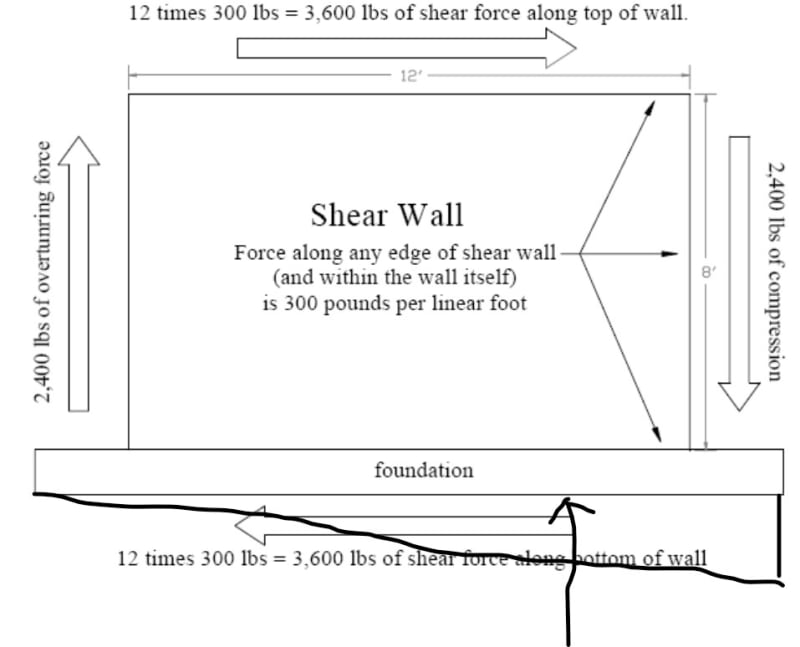I'm not convinced the foundation is typically checked for this by a lot of engineers.
(That's not really fair, because that's a woodworks document meant to walk people through the design of the wood elements, but if you're not paying attention and following their approach, you're not going to check the foundation for overturning or sliding.
The continuous foundation is pretty typical, as brTCP indicates, and if the building is long enough there's a fairly large Sx involved in resisting that moment, so just because an engineer doesn't explicitly check it doesn't mean it will be a problem, but it can't be precluded out of hand, and it's not great that it's omitted. It would likely be more problematic if a) structures more routinely saw 50 year wind loads, b) "unestablished" load paths, and c) inertia, as in the wind is a three second gust outside hurricane zones, larger than planned dead loads, etc.
Source:
(with scribbles by me)
Stress distribution on the foundation would change if there is a larger moment as the soil can't do a tension load. This sort of load would increase the downward pressure on the footing (P/A + M/S at the extreme far end) that might affect the reinforcing in the strip footing beneath the wall.
ETA - I'd be more concerned with the transverse moment in the strip footing beneath the wall, as the cantilever past the wall itself is fairly small, as depicted. Usually longitudinal reinforcing here is sized based on either minimum reinforcement, 4/3 of that required by analysis (whatever that may be, for example presuming dead snow and live loads only and sizing based on a presumed 5' depression the continuous footing has to span across), etc.

